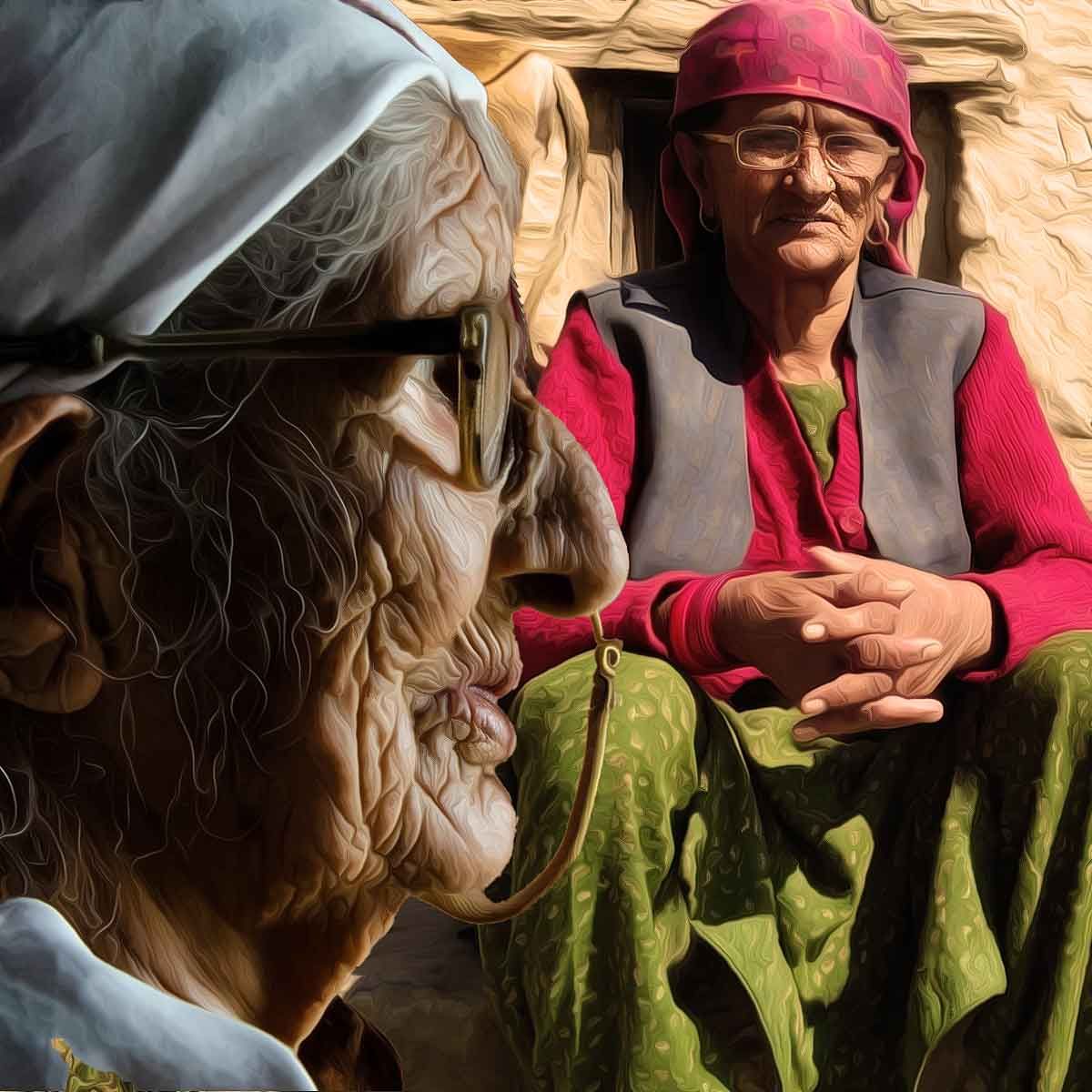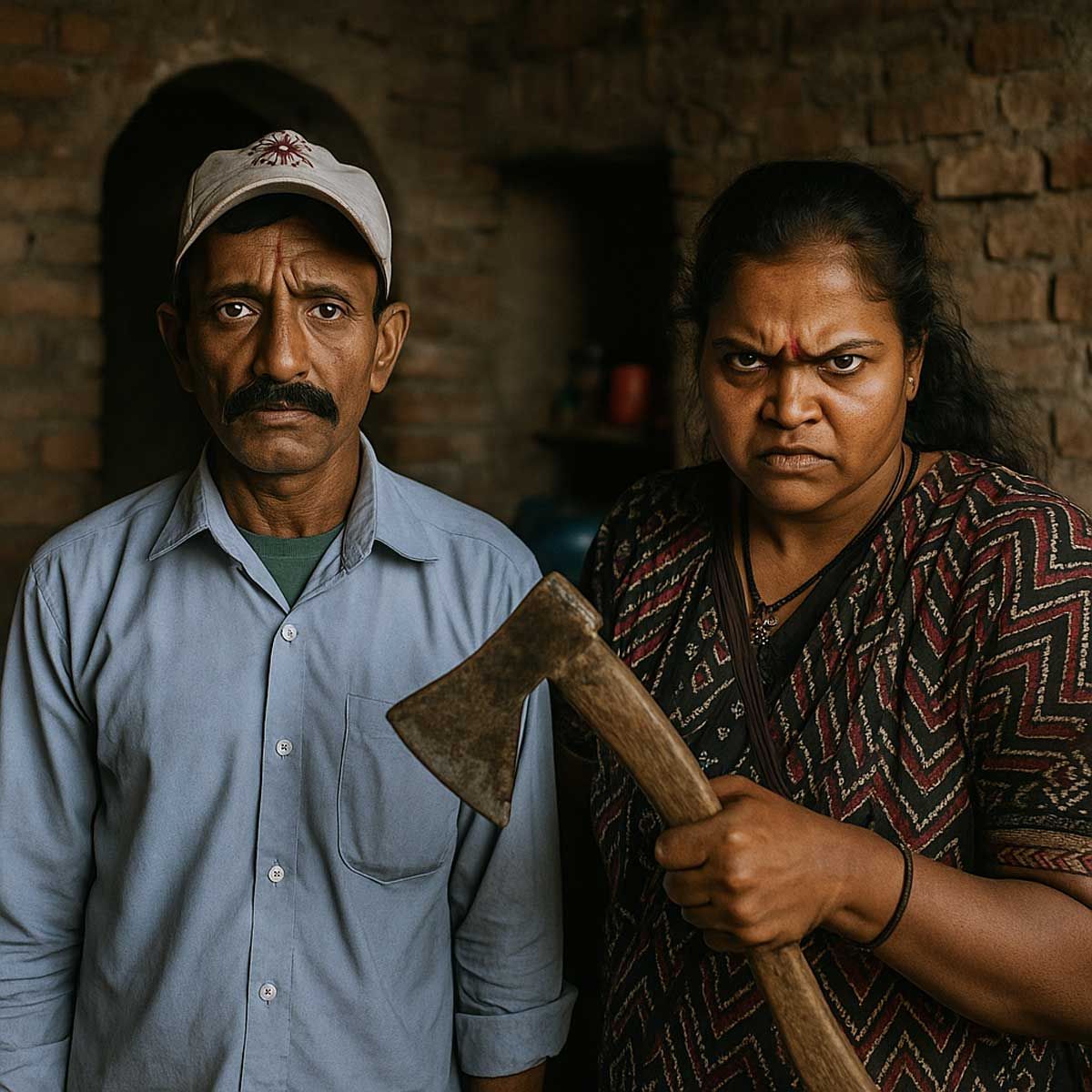More Coverage
Twitter Coverage
Satyaagrah
Written on
Satyaagrah
Written on
Satyaagrah
Written on
Satyaagrah
Written on
Satyaagrah
Written on
JOIN SATYAAGRAH SOCIAL MEDIA
"From the heart of Himachal, gratitude emerges": After decades of waiting, Himachal’s Hatti community revels in tribal recognition, sending gratitude to PM Modi, a testament to their unwavering spirit and the mountains of Sirmaur that stood witness

In the picturesque setting of Himachal Pradesh's Sirmaur district, the heartbeats of the Hatti community have never resonated with so much pride and joy. For the 2.5 lakh individuals who call the mountainous belt their home, the recent recognition as a tribal community has breathed new life into their decades-old hope—a promise often echoed during election seasons but rarely materialized.
|
When President Draupadi Murmu signed off on the bill, previously approved by the Rajya Sabha, the atmosphere was electric. Across 154 panchayats, you could witness the Hatti people—both men and women—bursting out of their homes. Their joy manifested in the form of their age-old traditional dances, and the air was filled with gratitude. Communal feasts, songs of thanks echoed, primarily dedicated to Prime Minister Narendra Modi and Union Home Minister Amit Shah, who played pivotal roles in turning their aspirations into reality.
This long journey for recognition began earnestly when the Lok Sabha passed the bill in 2022, following the promise made by Amit Shah. It's crucial to note, as former Chief Minister Jai Ram Thakur articulated, that this wasn't just an election agenda. Instead, it was about acknowledging and uplifting a significant community inhabiting the rugged terrains of Sirmaur near the Uttarakhand border. He mentioned the paradox that while their neighbors in Jaunsar Bawar, Uttarakhand, enjoyed the benefits meant for tribal communities, the Hattis were left waiting. Their plea was undeniably valid, and thankfully, the central government acted with empathy.
Rooted deep within the valleys between the Giri and Tons rivers, the Hattis have a rich history. Once, they were integral to the royal estate of Sirmaur. Their separation from Jaunsar Bawar only came about in 1815 due to the partition. The Hatti population in the Giripar area impressively comprises 62 percent of the tribes. With their newly-acquired tribal status, they will now be able to tap into funds from both state and central provisions, ensuring their growth and well-being.
Leaders of the Hatti community, including Dr. Amichand Kamal, the President of the Central Hatti Committee, and general secretary Kundan Shastri, expressed their heartfelt gratitude towards President Draupadi Murmu for her swift action. Their thanks also extended to PM Modi, Amit Shah, and BJP President J P Nadda.
But what does this recognition truly mean for the Hattis? For starters, they can now claim reserved seats in educational institutions and government job sectors. Financial support for development projects, scholarships ranging from school to higher education, and subsidized loans for agriculture and horticulture are now within their grasp. Suresh Kashyap, the BJP's Lok Sabha member from Shimla, also highlighted a particularly heartwarming aspect—this recognition will play a significant role in preserving and promoting the unique and fading Hatti folk culture.
|
The Hattis' struggle for tribal status dates back to 1967. Their determination only intensified over the years, and their voice became louder, reaching even the power corridors of New Delhi. In 2019, they had even threatened to boycott elections. However, Amit Shah stepped in, assuring them that their concerns would be addressed.
Interestingly, the name "Hatti" is derived from their tradition of selling various goods like vegetables, crops, meat, and wool at small markets, fondly termed 'Hatts'. Within the community, there exists a structured caste system, with the 'Bhat' and 'Khash' being the upper caste, and 'Badhois' at the bottom rung. This new tribal status initially stirred concerns among the lower caste members, fearing a loss of reservations that enabled them to secure government jobs. But these fears were allayed by the state government, ensuring that the benefits for Dalits would remain unaffected.
Historically, the Hatti region predominantly leaned towards the Congress party. But with time, the political landscape has evolved, with the BJP gaining substantial traction, largely credited to their backing from the Hatti community during the Parliamentary elections.
Both major parties, BJP and Congress, have shown interest in the upliftment of the Hattis. While the BJP's manifesto promised them ST status, Congress too, under the leadership of Chief Minister Virbhadra Singh in 2016, vouched for the same. Sadly, his efforts didn't bear fruit due to an insufficient Ethnography Report. However, a new dawn emerged with a detailed study by Himachal Pradesh University, resulting in a comprehensive report in March, championed by the BJP government.
In essence, this story of the Hattis isn't just about a tribal status; it's a testament to perseverance, hope, and the indomitable spirit of a community.
|
The Hattis: A community of Himachal Pradesh
The Hattis, an indigenous community from Himachal Pradesh, have been silently fighting for recognition for over half a century. Their 55-year-long battle was for a unique status: to be recognized as a Scheduled Tribe under the Indian Constitution. Now, once the Bill clears both houses of the Parliament and gains official status as an Act, they'll be enshrined in the Fifth Schedule under article 342 of the Constitution.
To provide some context, back in 1967, the neighboring region of Jaunsar, which now lies within the boundaries of Uttarakhand, was granted Scheduled Tribe status. Meanwhile, the Hattis, residing across the river Tons in Himachal Pradesh, were left out. It's essential to understand that despite the river Tons separating them, the Hattis and the Jaunsars share many similarities. They have deep-rooted kinship ties, known as Daichara, and their lifestyles, from agricultural practices and socio-cultural rituals to festive celebrations, are strikingly alike. This similarity further fueled the feeling of injustice, as merely being on the opposite side of the river, under a different administrative state, denied the Hattis this critical status.
One of the community's vibrant traditions is the Budi Diyali festival, held precisely a month post-Diwali. People partake in joyous song and dance, wielding fire-lit torches symbolizing the victory of good over evil. Some believe it celebrates Sita's return to Ayodhya after her prolonged exile, where elder women illuminated the city using torches. Others associate it with the legendary duel between Hindu mythological figures, Indra and Vrita. This festival isn't just confined to the Hatti community; variations of it are seen throughout the Kullu district.
The Hatti's 'Haathi Nach' or the elephant dance during Budi Diyali is particularly mesmerizing. Under a vast cloth shaped like an elephant, dancers perform synchronized moves. This dance isn't just for entertainment; it showcases the community's strict societal hierarchy. With two primary categories, Bhat and Khash at the top, and Badhois beneath them, there's a clear indication of status. In fact, during the dance, lower-status members mimic the elephant's feet, while higher status individuals enact warriors, demonstrating valour with swords and shields.
|
The primary question among them was whether they should even seek Scheduled Tribe status. Some felt it was demeaning, while others argued it would bring socio-economic progress. This status is particularly beneficial in hilly regions, promising improved infrastructure, like better roads and schools, and schemes for healthcare and irrigation. Moreover, being recognized would ensure Hatti children receive educational opportunities through constitutionally mandated reservations.
The name 'Hatti' is believed to originate from the term 'Haat', referring to the weekly markets where villagers sell their crops. Most are agriculturists, and their picturesque green fields are a sight to behold. Located around the Shillai region of District Sirmour, they're also referred to as the trans-Giri community, named after the river that separates them geographically and culturally. With a population of around 1.60 lakh individuals spread over 400 villages and 154 Panchayats, the Hattis are a significant part of Himachal Pradesh's demographics.
Education is paramount for the Hattis. Sirmour district already boasts a literacy rate of 78.8%, but there's always room for improvement. With the region's rich natural beauty and popular trekking routes, ecotourism could further uplift the community. Iconic sites like Renuka lake, Shivalik fossil parks, and religious centers increase the district's appeal. As the Hattis integrate into the tribal category, it's anticipated that their long-standing debate over tribal status will shift towards discussions of a brighter future.
In terms of development markers, households gauge progress by their size and spending abilities. Villages or Panchayats evaluate development based on infrastructure. However, schools in Himachal Pradesh's tribal areas often lack staff. Even elaborate hospitals wait for medical specialists. Tourism, specifically eco-tourism, and favorable climates for cash crops are the region's main attractions. Yet, the looming threat of climate change casts uncertainty. Landslides are becoming common, and Scheduled Tribe status ensures better compensation during such disasters.
In conclusion, the Hattis' long-fought battle is nearing its end, with hopes pinned on the upcoming parliamentary sessions. While some believe this recognition is a political move with elections on the horizon, the community's well-being is paramount. As they step into this new phase, one thing is sure: the Hattis will become a focal point for anthropological and sociological studies, shining a spotlight on their rich culture and heritage.
 Support Us
Support Us
Satyagraha was born from the heart of our land, with an undying aim to unveil the true essence of Bharat. It seeks to illuminate the hidden tales of our valiant freedom fighters and the rich chronicles that haven't yet sung their complete melody in the mainstream.
While platforms like NDTV and 'The Wire' effortlessly garner funds under the banner of safeguarding democracy, we at Satyagraha walk a different path. Our strength and resonance come from you. In this journey to weave a stronger Bharat, every little contribution amplifies our voice. Let's come together, contribute as you can, and champion the true spirit of our nation.
 |  |  |
| ICICI Bank of Satyaagrah | Razorpay Bank of Satyaagrah | PayPal Bank of Satyaagrah - For International Payments |
If all above doesn't work, then try the LINK below:
Please share the article on other platforms
DISCLAIMER: The author is solely responsible for the views expressed in this article. The author carries the responsibility for citing and/or licensing of images utilized within the text. The website also frequently uses non-commercial images for representational purposes only in line with the article. We are not responsible for the authenticity of such images. If some images have a copyright issue, we request the person/entity to contact us at This email address is being protected from spambots. You need JavaScript enabled to view it. and we will take the necessary actions to resolve the issue.
Related Articles
- Teetering on the edge of extinction due to synthetic and power looms sarees, Karnataka Udupi sarees, rooted in a 4,500-year-old weaving tradition, are now being revitalized thanks to NGOs' training programs and the Geographical Indication tag application
- "पितृ पक्ष": Amidst the chaos of modernity, the timeless ritual of ancestor worship stands firm, bridging the past & present, not mere tradition; its the soul's whisper, echoing gratitude & seeking blessings from those who once tread the paths we now walk
- Sripuram Golden Temple: Interesting Facts about World’s Largest Golden Temple in India
- 'Preserving state’s Cultural Heritage is important so Non-Hindus in Char Dham Yatra will have to undergo verification': Uttarakhand CM Pushkar Singh Dhami after concerns raised by Hindu religious seer
- Paramahansa Yogananda: Spiritual journey of a saint who was known as The Father of Yoga in the West
- PM Modi inaugurates rebuilt Shankaracharya samadhi in Kedarnath and said ‘Adi Shankara brought life to a sleeping civilisation, awakened Bharat to rise above caste boundaries’
- For the first time in the history of Puri Srimandir, 40 to 100 earthen hearths in the kitchen of Shree Jagannath Temple of Puri in Odisha were vandalized inside the Rosa Ghara
- रामचरितमानस एवं उसके अंग्रेजी अनुवाद तथा हिंदी के अकेडमिक्स का दोहरा रवैया
- Hindus need temples today more than ever and here is why
- "Faith moves mountains, and stones tell tales": Omkareshwar to Ayodhya - A journey not just of distance but of deep-rooted faith, carved from the sacred Narmada waters, the 600kg Narmadeshwar Shivling's odyssey resonates the hymns of billions in unison
- The Often Misunderstood Icon - The Real Meaning of the Shiva's Linga Symbol
- Birsa Munda: The tribal folk hero who was God to his people by the age of 25
- For the first time in the history of Tirupati, 30 devotees on foot stopped from reaching temple for carrying musical instruments up Tirumala hill by TTD: Devotees perform Nama Sankeerthanam during the journey
- Why India’s temples must be freed from government control
- ‘Kanyādāna’ in an Age of lunacy and trending social media campaigns: To Give or Not to Give




























